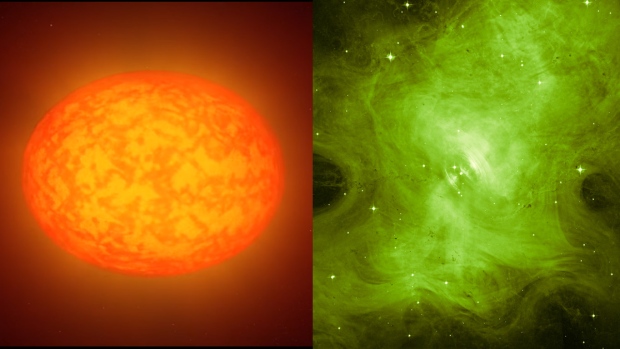NASA has released detailed images of some of its spookier recent space discoveries, including a patch of pumpkin-shaped stars and the still-beating heart of a supernova.
During an X-ray survey of the original Kepler field of view, a patch of the sky encompassing parts of the constellations Cygnus and Lyra, the rare stars were found. The pumpkin-like shapes of the stars are thought to be the result of close binary systems where two sun-like stars merged. The most thrilling member of the pumpkin-shaped stars group, a K-type orange giant dubbed KSw 71, is more than 10 times larger than the sun, rotates in just 5.5 days and produces X-ray emission 4,000 times greater than the sun does at its solar maximum.
“A side benefit of the Kepler mission is that its initial field of view is now one of the best-studied parts of the sky,” Padi Boyd, a researcher at NASA’s Goddard Space Flight Center in Greenbelt, Maryland, who designed the Swift survey, said.
She further said that the group was looking for variable X-ray sources with optical equivalents seen by Kepler, especially active galaxies, where “a central black hole drives the emissions.”
Talking about their observation, another team member Krista Lynne Smith said that “With KSwAGS we found 93 new X-ray sources, about evenly split between active galaxies and various types of X-ray stars. Many of these sources have never been observed before in X-rays or ultraviolet light.”
The researchers used Kepler measurements to regulate the rotation periods and sizes for 10 of the stars.
They range from 2.9 to 10.5 times larger than the sun. “Astronomers classify the stars as subgiants and giants, which are more advanced evolutionary phases than the sun’s caused by greater depletion of their primary fuel source, hydrogen.
All of them eventually will become much larger red giant stars,” NASA reports. The team has already prolonged their Swift observations to additional fields mapped by the K2 mission.















